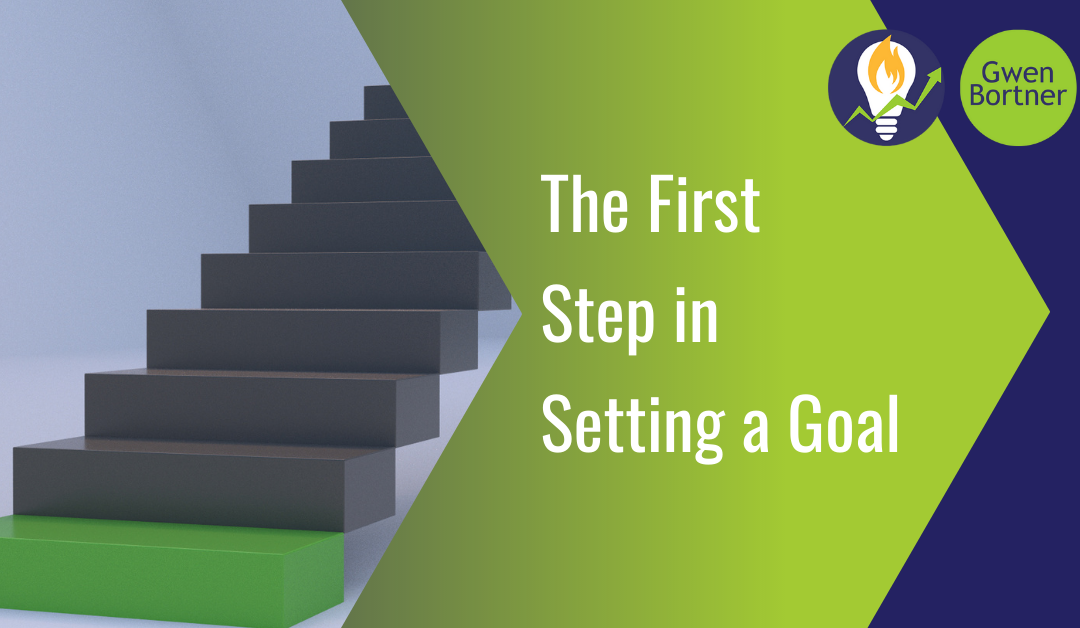
by Gwen Bortner | Operations, Tips & Tricks
There’s a reason we have the term “growing pains” in our collective vocabulary: growth can be painful! In your business, the periods that are the most stressful and overwhelming are usually also the periods where you experience the greatest growth and forward momentum. That’s why it’s even more important to have a clear strategy during those times, so that you can focus on one step at a time, keep your wits about you, and power through the painful period in order to come out victorious on the other side.
Though there are several reasons you might be experiencing growing pains in your business, in my work with entrepreneurs I’ve found that there is some common ground here. If you’ve experienced painful growth in these areas, know that you are not alone! This is an experience shared by almost everyone who has ever tried to run a business.
4 Ways Growth Can be Painful in Your Business
1- Hiring Your Team
When you hire another person in your business, the sense of overwhelm usually comes down to two factors: finances and operations. Whether it’s your first hire or your 15th, expanding your team can absolutely cause some growing pains in these areas.
- Finances: You may never feel like you’re “earning enough” in your business to pay someone else, but when most entrepreneurs get to the point of needing to hire someone else, it’s because they have simply hit a plateau. They cannot earn more money on their own, because they just can’t take on any additional workload. Hiring someone else—and paying them for that work—is often a financial hit at the beginning. Soon, however, you realize that by paying that person to take on some of your workload, you’ve freed yourself up to move to the next income level as a result. This is true of every new hire, so you should expect a little bit of financial strain each time, but it should resolve itself shortly.
- Operations: There’s a learning curve at the beginning of the hiring process every time. The new person needs to learn the steps and skills of their duties, but you also need to learn how to explain those steps and skills to another person. If you’ve been doing the work yourself, chances are you haven’t written out an onboarding process for that, because you just knew what to do all along. Now you’re going to have to invest some time up front to train your new hire; but once you’ve done that, having them take over that work is going to save you significant time in the future.
Hiring a new team member is painful because it requires an up-front investment of time and money, without an immediate return on that investment. However, if you’re playing the long game toward sustainable growth, this investment is absolutely worth it.
2- Unexpected Growth
Sometimes, growth just sneaks up on us out of nowhere. You may find yourself mentioned by a key influencer on social media, or your clients have all decided to refer new business your way at the same time, or perhaps you’ve just gained enough traction that you’re starting to see the natural momentum in your business increase.
Whatever the source of your unexpected growth, it can feel like one day you were just cruising along at ground level, and the next you’re expected to know how to fly at top speeds. It will take some time to reorganize your systems around this growth, and to make a plan for how to address it in the long-term. Having a reliable, repeatable procedure for tackling goals and To Dos is key to riding the waves of unexpected growth in your business.
3- An Influx of Clients
Remember a few months ago, when you were hoping you could round out your client roster a little more fully? Now, all of a sudden, you have more clients than you know how to manage! It can feel like this type of growth comes in surges, and often we don’t realize our maximum capacity for handling client work until we reach that capacity.
If you’re at this point, you have a few different options available to you:
- End your relationship with any clients who are not an ideal fit, in order to make space for new clients who are more aligned with the type of work you want to do or the type of working relationship you want with your clients.
- Hire new contractors or employees to help you manage the workload
- Raise your prices so that you can afford to work with fewer clients; those who aren’t able to retain your services at that price point will naturally fall off, and the ones who remain will allow you to work less but earn the same or more income.
While an unexpected influx of new clients can throw you for a loop at the start, it often provides an opportunity to shift or pivot your business to a point where you are earning more income or doing the type of work that is more in line with your desired workday.
4- A Significant Life Change
You may be a business owner, but you’re also a human being, and that means that occasionally the changes in your personal life are going to affect your business. Some of these life changes may include:
- Divorce, marriage, or new romantic partnership
- Becoming an “empty nester” for the first time
- Having a child
- Retirement for you or your spouse
- Moving or beginning life as a digital nomad
Having a system in place that you follow regularly in your business can mean that you are ready when these life changes arise. You can make a plan to give yourself time to transition through the change, to re-evaluate your goals, and move forward with your new life status and your business.
No matter the scenario, early preparation is the key for navigating unexpected changes in your life and business so that you can reduce the amount of overwhelm you feel in the moment and keep moving forward with a clear plan. If you’d like to be prepared for whatever life and business throw your way, I invite you to join me in my workshop, “3 Strategies to Minimize Overwhelm, Reduce Stress, & Produce Results that Matter.” We’ll work together to set you up with a system that you can follow any time your business gets overwhelming, so that you can get back to work and back on track to reach your goals.
Register now to join me for the workshop, happening September 9th from10:30 AM TO NOON PT.
I look forward to seeing you there!

by Gwen Bortner | Leadership, Tips & Tricks
In my last post, I outlined the biggest obstacles we face when we have to make a tough decision (click here if you haven’t read that one yet). This is also a follow-up to the piece I wrote for APeeling Magazine; if you’d like to read the original piece, click here.
Knowing what’s holding you back from making a big decision is half the battle – but it’s only the first half. It helps to give you clarity and insight, and to move past any emotional or tangible roadblocks you may be facing. Now that you know what’s holding you back, your next task is to actually make the decision, and that’s where it can be tricky.
Today, I’m sharing my top strategies for making decisions when there isn’t a clearly “right” answer. I have used these strategies to set business goals, make decisions that would move my company forward, and even to make challenging personal decisions. Maybe one of these strategies will help you in a similar situation – make sure to bookmark this page so you can come back to it when you’ve got to make a big decision.
Strategies to Help You Make Better Decisions
The Stair-Step Method
This one is for a decision where there are multiple options, and you’re not sure how to choose between so many possibilities. For this strategy, make a list of your options and number them in order. The trick is, instead of trying to look at every possibility all together, you’re going to narrow it down one pair at a time. Look only at choice #1 and choice #2. Pick the best option JUST between those two. Now, put the winner of that contest up against choice #3, and pick the best option only between those two. Repeat this process until you reach the bottom of your list. The winner of the final 1-on-1 contest is the choice you’re going to pick. (Note: you don’t go back through the list and pair them up differently a second time; you get to the bottom and that’s it. Like a sports bracket, there’s one clear winner, and the match-ups don’t get shuffled around after the final game.)
Beyond the Pros and Cons
Chances are, if you’ve been stuck on a decision for any length of time, you’ve probably already tried making a pro/con list, and you still don’t have enough clarity to make the decision. If you’re trying to make a “yes or no” decision, try this strategy instead, which is a twist on the classic pro vs. con list. Divide your paper into four sections and label them like so: pro/want, pro/need, con/want, and con/need. Now, you still brainstorm a list of pros and cons, but you associate each one with something you want or something you need. This can be especially helpful if you’re making a decision that involves doing something difficult that you don’t really want to do, but you know it will move you forward. Breaking the pros and cons up into four different categories can give you clarity on the strongest options between them, and can also help you see if you’re holding yourself back from a decision because it isn’t really what you want to do.
Short vs. Long Term
Use this strategy when you’re choosing between two options that have a lot in common. The similarity between them is likely what’s holding you back from picking one in the first place, so this strategy can really help with that. For each option, make a list of short-term wins and long-term wins if you were to choose that option. When you compare them side-by-side, it can be easier to see the overall benefit of each choice. Do you really need a short-term win in order to get over an immediate hurdle, or will your business benefit overall if you play the long game and wait for a win that takes more time? As you’re evaluating the options, ask yourself: will you be glad you made this choice in 3 months, 6 months, a year? The phrase I use is: Will Tomorrow Me thank Today Me for this decision? This can help you really weigh the options and make the best choice.
If you’re still struggling, you may be putting far too much emphasis on one single decision. In almost every situation, you will have an opportunity to choose differently at some point in the future. There will likely be a cost – of time, money, or opportunity – but there will be a time when you can reverse a decision or take a different path. It’s very rare that a decision is both life-changing AND permanent, but sometimes it can feel that way in the moment.
If you struggle with making decisions, adding these strategies to your toolkit should help you make confident choices to move your business forward. If you still need some help, sometimes the best thing you can do is bring in an outside perspective; someone else who isn’t emotionally attached to the outcome of your decision can bring clarity to the situation that you may not be able to find on your own. If you’d like some help with your decision-making, click here to book a 1-on-1 coaching session with me. Let’s tackle this problem together!

by Gwen Bortner | Leadership, Marketing, Operations
Recently I wrote an article for APeeling Magazine about how to get out of your head when you’re faced with an important decision. Today I’m sharing some similar ideas, but if you’d like to read the original article, click here.
I’ll bet if I asked you to track all the decisions you make in any given week, the number would easily be in the double digits. And that isn’t counting all simple, mundane decisions we make every day. As the CEO of a company, some of the decisions you make are small and simple – there’s an obviously right choice, and it only takes a few minutes of your time. However, there are also those other decisions, the ones that carry more weight or don’t have an obviously right answer, that tend to suck away all of your time and energy for longer than you’d like. If you’ve ever been lost in the weeds of making an important decision, today’s post is for you.
Chances are your decision-making struggle is caused by one or more of the following scenarios:
Outside Pressure
In this situation, you’re struggling to make a decision based on what other people think you should be doing, or your perception of what others will think. If there’s outside pressure pushing you in a certain direction, but your inner voice is telling you that’s not the right solution, it causes conflict. How much easier would life be if we could reject the idea of outside pressure, and just make decisions based on trusting our gut or knowing what we want? Unfortunately, most of us do struggle to meet outside expectations, so this can be a very real problem.
Want vs. Should
You may be struggling because there’s something you know you should do, but you really don’t want to do it. Or vice versa – there’s something you want to do, but it feels like something you shouldn’t be spending your time on. This might be a “suck it up” moment where you really just have to bite the bullet and do the unpleasant thing, even if it isn’t fun or exciting.
Feelings vs. Facts
In this scenario, chances are you know what you need to do, but you’re afraid of hurting someone else’s feelings by making this choice. A similar situation is one where you don’t want to have to inconvenience anyone else to make this decision possible, so you’re afraid to ask them for help. It might help to think about what you’re losing by not making this choice, or what you would lose if you didn’t ask for the help. It can help to have data to help you make the choice that will involve a difficult conversation.
Equal Footing
Sometimes a decision is really hard because it’s either a decision between two good choices or between two bad choices. If you can only choose one thing out of two great options, it can be hard to pick one because you’ve got a fear of missing out on the other option. Conversely, if you’re stuck between a rock and a hard place, neither option feels very appealing. In this case, you probably have to go with what feels the most right (or the least wrong), and just move on.
Alignment with Your Goals
Maybe what’s holding you back from making a decision is that somewhere, your gut is telling you that this decision isn’t really in line with what you need to be working on right now. If you’ve been following a system of setting goals in your business, is this decision going to bring you closer to your current goal, or distract you from it? If you’ve been feeling reluctant but you aren’t sure why, check in with yourself and your goals to see if this decision is truly in alignment with where you should be focusing right now.
Usually, the things that hold you back from making a quick decision are somewhat intertwined. Chances are, you’re actually dealing with more than one of these scenarios at once. The biggest obstacle is identifying what holds you back; once you can do that, it becomes a lot easier to find a solution and move forward.
The next time you’re stuck in the middle of a choice that’s too difficult for you, try identifying what’s holding you back and acknowledging the problem first. Then, make a list of your options so that you can evaluate them and pick the one that’s best for you. As the CEO of your company, you have to hold yourself accountable to making the best decisions that you can, given the tools and resources at your disposal. It isn’t always easy or fun, but it’s necessary if you want to keep moving forward in your business.
If you need some help identifying the greatest area of need in your business, the GEARS assessment can help! Click here to take this free assessment to determine the strengths and weaknesses in your business, so that you can choose the best options to focus your time and energy on for the upcoming quarter.

by Gwen Bortner | Leadership, Tasks & Goals
How many times have you set a goal, personally or professionally, and then felt frustrated when you weren’t able to reach it? Maybe you were really enthusiastic at the beginning, but you lost interest over time. Maybe the goal felt attainable when you set it, but then you just never seemed to get close to actually reaching it.
If you’ve been struggling to reach your goals, chances are it’s because you’re skipping a very important step. Instead of starting the goal-setting process by looking forward to what you hope to reach, instead you need to start by looking back.
My coaching clients and I start our quarterly goal sessions with a thorough, all-day review. After all, you can’t choose where to go next if you haven’t stopped to look around and assess where you are now.
This is the process we follow:
1: Highlights
Start by recording your wins for the prior quarter. No matter how bad you think the last three months were, there are always some wins to be recognized. This sets a positive tone and helps you focus on how to do more of what you and your business does best. Then identify a few key challenges and roadblocks that need to be addressed going forward. Finally, take a few minutes to note any important observations as these can be extremely valuable later in the process.
2: Financial Assessment
Start by looking at your numbers at a higher level than what you do every month, so you don’t get too caught in the weeds. Look at what IS, not what you think might be, using real numbers and real results. Look at sales, customers or clients, income, or whatever other financial metric you think would be valuable to track. Write down where you are for the previous quarter.
3: GEARS Assessment
My coaching clients use my free GEARS assessment to help them get focused on the most important aspects of their business every quarter. We examine goods & services, effective leadership, accountability, resources, and systems together. We also check in on sales and marketing during this time. (Want a free copy of my GEARS assessment to use in your own review? Click here!)
4: Personnel Assessment
In your company, are the right people doing the right job in the right way with the right attitude? If not, then what needs to be fixed or changed? Do you need to let someone go, move someone, find someone new? This may be the most difficult part of the process, especially if you have worked with your people for any length of time, but it’s only through asking ourselves tough questions like these that we are able to move forward.
Time to review & assess.
Once you have completed an extensive review, it’s time to look at what you just outlined: what is your review telling you? Are there areas that stick out as being high-need scenarios? Is there anything that surprises you about the information you gathered? Where should you go next, based on what you’ve found?
Take stock:
- Write down what you have done really well, that you want to continue into the next quarter.
- Now note that area of the highest need for improvement.
- Write down the area that you’re most enthusiastic about working on in the future.
- Write down any big “emergency” problems that need your attention immediately.
Be honest with yourself at this stage, and use the real data from your review to help you take your notes. You’ll probably discover through this process that in some areas, you’re doing better than you thought you were. In others, there may be problems you weren’t aware of until you did this review. That’s why it’s so important to look at actual data and not base your goal-setting off assumptions or memory.

by Gwen Bortner | Leadership, Operations
For my entire life as an entrepreneur, one thing that I really geek out over is quarterly review & planning sessions. I just love the clarity I find in these sessions that helps me take an honest look at where I’ve been, the momentum it builds to set goals for my future, and the security of knowing I have a solid plan to carry me forward for the next three months.
Since this has been one of my favorite topics for years, I’ve written quite a lot of information about it! So today I’m rounding up some of my favorite posts, in the hopes that they might inspire you to find some motivation around your own quarterly planning.
Want some advice and tips for quarterly planning? Check out these posts…
If you want to DIY a quarterly planning process for yourself, these resources should be pretty useful to you in that process. However, if you’re looking for something a little more useful, I’d love to invite you to join me for the Quarterly Tune Up.
The Quarterly Tune Up is my goal-setting program for successful CEOs and entrepreneurs who want to…
- get clear on where they’ve been and face the facts of their current business situation.
- use a customizable system to set goals that are authentic to their own needs and dreams.
- have the support and inspiration that comes from brainstorming with like-minded entrepreneurs and surround themselves with others who totally “get it.”
- hold themselves accountable with as much or as little pressure as they need from an outside source in order to take the action required to achieve their goals.
- carve out time each quarter to work on their business goals and take the regular action required to get to the next level.
Interested in how Quarterly Planning can help you achieve the goals you have for your business? Join us April 6th & 7th, 2022, for the Quarterly Tune-Up!






